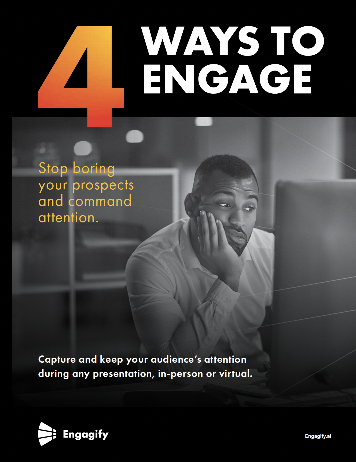A trade show is first and foremost, a show — an opportunity to present your brand’s best self and engage prospects with a memorable, fun experience. Because many of us have exhibited at so many trade shows over the course of a year, we often find ourselves on ‘autopilot’ during the show; going through the motions and our list of talking points is a good strategy, but it might alienate your prospects and make them feel like you aren’t really there to engage in a meaningful way. As you prepare for your next trade show, remember to focus on creating purposeful connections and engaging interactions. A little bit goes a long way, trust us!
Here are five ways to attract and engage your best prospects at the next trade show.
1. Be strategic.
Before you get to the show floor, decide on a strategy with measurable goals for the show – whether it be to launch a new product, generate leads, conduct product demonstrations, or close sales. Your strategy will be enhanced if you’re in tune with what your customers want, too; typically, the average trade show attendee is looking for variety, interesting exhibits and products, information, and knowledge or insight that they didn’t have before.
2. Know your customers.
The first thing you should do once you meet someone at a trade show is to establish who they are – buyer, decision maker, supplier, competitor, etc. – and what they’re looking for. This way you won’t end up spending important time with a person who isn’t responsible for buying your product/service, or who is located in a region your company doesn’t serve. You can generally find this information out by asking some key questions, looking at their badge, or requesting a business card, which will have the person’s title and address.
This also means knowing the type of attendee you’ll be dealing with. How you attract and engage that type of person is integral to the success of your approach. For example, at Black Hat Conference in Las Vegas, the attendees tend to be men aged 20-45 who are into hacking. What will engage that group compared to an almost all professional female crowd at the SHRM (Society for Human Resource Management) show are two very different things.
3. Engage in mindful networking.
Networking is all about engaging with different buyer personas in the way they want to be engaged so that each person receives something from the other. Consider yourself the leader, steering the conversation the way you want it to go, while simultaneously engaging the other person – talking about their interests, solving their specific problems, and interacting in the way they want to interact. Networking can be fun and successful if you put in the effort to get the results your team needs!
4. Follow-up with your best leads after the show.
Closing a sale during the show itself isn’t always possible, and while on-site sales might be your main goal, it can often be challenging to close a deal with a prospect whose first interaction with your business/products are at the event. Don’t be pushy with prospects who don’t seem ready to buy on site; instead, after the event has come to an end, follow up with your leads and enter them into lead nurturing campaigns to make them readier to buy as you continue building the relationship with the contacts and leads you’ve interacted with on site. Segment your leads and follow up according to your prospect’s interests. Always what’s in it for them!
It’s often helpful to come up with tactics that can engage your prospect and ensure they’ll respond positively when you get in touch after the conference. For example, you could make a special promotional offer to attendees of the show, or offer to arrange a private consultation during the show. Some exhibitors find that reserving a room near the trade show floor/event is helpful – you can use this space to answer any remaining questions, talk about prices, and ultimately close deals in a one-on-one environment.
5. Avoid a hard sell – and be yourself!
All too often, interactions between sales teams and potential customers can be robotic and unnatural; which only hurts your chance at a sale! The act of exchanging information about your products can often feel transactional and tedious, but it doesn’t have to – connecting with a prospect in a natural, enthusiastic way will always be more successful than leading with a hard sales pitch. It’s important to really know your stuff here so that you can weave certain talking points into the conversation flow without making it seem over-the-top sales-y.
Lead with topics that interest your prospects, then find an appropriate segue. People know when you’re spattering off rehearsed lines, and it can be a turn off to potential customers. Make each interaction meaningful, and we guarantee you’ll be rewarded for it!




